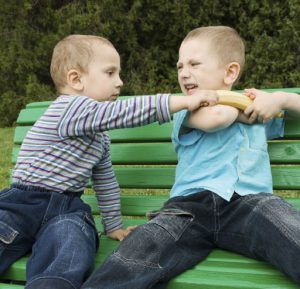Download a printable copy of this article (PDF 573KB)

- Challenge yourself by considering provocative points.
- When conflict arises, try speaking to the student who is bullying first.
- Maximise the involvement of the student engaging in the bullying behaviour.
- Hold the student who is bullying accountable for the harm their
behaviour is causing.
Whenever I’m speaking to teachers as part of a professional learning (PL) experience I always emphasise five non-content based learning intentions.
After all, there is a limit to how much content anyone can absorb in a whole day of PL. Most of us remember very little.
“Peace is not the absence of conflict. It is the ability to handle it by peaceful means.”
– Ronald Reagan
Truly effective presenters know how to provide a memorable experience around the content. Five essential intentions are to:
- Inspire
- Challenge
- Provoke
- Strengthen
- Connect
This article is designed to provoke. Occasionally, we all need to hear something provocative, forcing us to place our beliefs, our practice and our status quo under the microscope.
This provocative statement is that we’re doing conflict all wrong in Australian schools and that the most significant mistake we make is to focus on the student who is being bullied. I believe that, when conflict or a fight or a bullying situation emerges, then the first person we should speak to is the student engaging in the bullying behaviour.
This is why.
In the frequently used practice where we listen in detail to the student who is being bullied before engaging with the student who has been bullying, we cause a number of both positive and negative consequences:
- The student being bullied feels heard … by us.
- The student who has been engaging in the bullying behaviour watches us listen intently.
- Our own emotions towards the student who has been bullying becomes visible.
* Note – have you spotted who the first three examples are all about? - The student who has been engaging in the bullying behaviour is already mistrustful of the system at play.
- The student being bullied is usually handing over the responsibility for action to us.
- We make assumptions about the truth and any resultant required action.
- We use a process that has been tried for centuries without success.
- We emphasise that consequences are likely and assume that this will be effective in terms of reducing future repetition of the behaviour.
- And then we talk to the highly disengaged and resistant student who has been engaging in the bullying behaviours.
By talking to the student engaging in the bullying behaviour first we:
- Maximise engagement in the restoration process.
- Improve accountability.
- Make the student who has been bullying accountable for repairing the actual problem, rather than simply writing lines or completing a detention.
- Encourage thought about behaviour. Thinking is imperative for behaviour change.
- Emphasise that the problem to be solved is about relationships. We are then the facilitators of that solution rather than the arbiters of a consequence.
- Reduce anxiety and fear in the student who has been bullied. This student is often highly apprehensive about how the student who has been bullying them will react.
Which set of consequences is preferable? It may seem incredibly counter-intuitive to ask a student who has been experiencing bullying to wait quietly while you get the other side of the story. We’ve been conditioned to believe that supporting the student who is being bullied is the primary focus. However, students who are being bullied will thank us for the participation of the student/s engaging in the bullying behaviour, because the truth is that only the student who is engaging in the bullying behaviour CAN solve this problem. Our power here is limited by our ability to supervise. We’re just not that special when it comes to conflict!
We’ve been going to the student who has been bullied first for a long time. I encourage you to run a trial. For a month, go to the student engaging in the bullying behaviour first and see what the difference is in behaviour, particularly recidivist behaviour. Making this fundamental shift could be the first step in the reduction of frequency and severity in repeat offences that you’ve been striving to achieve.







